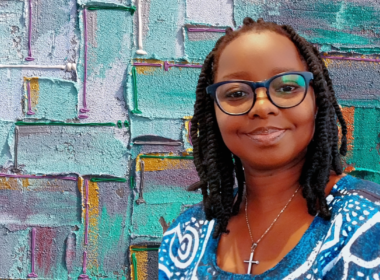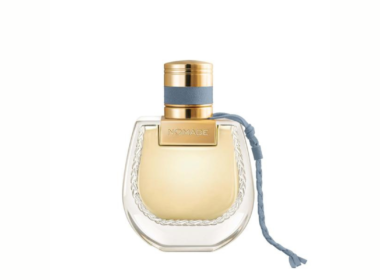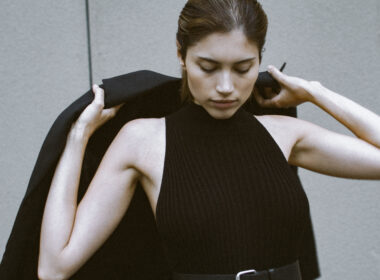Estelle Adeline Trasoglu, “as if by magic,” they say, “has managed to create her own unmistakable fashion DNA in which the factors of inclusivity, wearability, and environmental awareness co-exist. Estelle’s Plaid-à-Porter does not only merge impressive functional abilities and aesthetic appeals but also evokes deep emotions by telling compelling stories through its designs. Estelle’s magnificent brainchild has bagged the prestigious “Young Fashion Design” award. Let us uncover the stories behind these innovative designs.
Estelle Adeline wins Young Fashion Design award for Plaid-à-Porter
FAB: What inspired you to create “Plaid-à-Porter” and focus on upcycling as a core principle of your fashion label?
Estelle Adeline: I’ve always loved seeing clothing as an expression of my personality, my mood, and my zest for life. Wearing a unique piece does something to you—it is as unique as you are; you don’t just wear it; you appreciate it in a completely different way. Reviving this appreciation for fashion has been my driving force. Moreover, I have always admired traditional tailoring: patchwork techniques, hand embroidery, and crochet art. These treasures from the past deserve to be brought out of obscurity and into the spotlight, which is why I transform them into upcycled statement pieces. Why use fabric by the yard when we already have such valuable textiles? I love honouring our heritage while simultaneously creating fashion with a future.
FAB: Please tell us about the journey of your creative process for Plaid-à-Porter, from conceptualisation to final execution. Or perhaps, what’s a typical day like?
Estelle Adeline: The exciting part of my design process is that I don’t start with the finished pattern but with the textiles. I collect valuable vintage blankets in my studio and let them inspire me. One blanket screams to become a “GO BIG OR GO HOME” coat, while another I envision as a delicate crochet dress. Depending on my decision, I cut the blankets or drape them on the mannequin, always focusing on highlighting the DNA of handmade textile art in my design. The most important and time-consuming task is maintaining the symmetry of the patterns while trying to create as many pieces as possible from one blanket. This can take hours! Not a single centimetre can be wasted since each blanket is unique.
Once I have cut the individual pieces, they are lovingly assembled by hand and adorned with a special history tag, where I note the blanket’s date of origin and, if available, the place of origin. For example, it might read: “Comme Çi Comme Ça Jacket, size S, vintage quilt from California, made in 1930.” Following the zero-waste philosophy, I design accessories and baby jackets from the remnants.
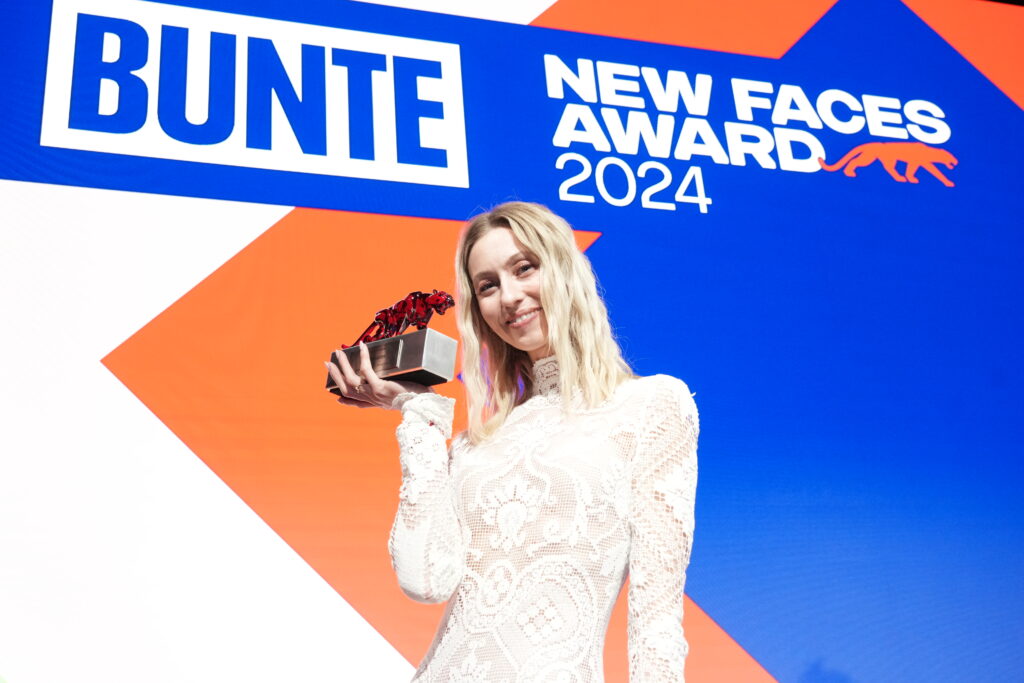
FAB: The judges praised your collection for having a strong recognition value. How did you develop your distinct fashion DNA?
Estelle Adeline: For me, fashion has always been a means of expression, approached with respect and curiosity. I worked for over ten years as a fashion editor for major fashion titles in Germany, such as InStyle, ELLE, and VOGUE Germany. Through this experience, I honed my expertise, style, and high standards in fashion to the point where I realised: I have to do my own thing because it simply doesn’t exist yet. Stay up to date on the latest in fashion, arts, beauty, and lifestyle by following FAB L’Style Magazine.
Estelle Adeline: It is highly emotional work to transform blankets, some of which were created through months of meticulous handcrafting, into clothing. I approach each of these textile treasures with great reverence, and it fills me with deep satisfaction to see people wearing these wonderful upcycled pieces and giving them new life. On an antique patchwork blanket from Texas, made by a local quilting bee club, I counted over 100 hand-stitched names. It was likely a very special wedding gift, with each guest immortalised on the blanket. From this extraordinary patchwork quilt, I created a “GO BIG OR GO HOME” coat and a “LITTLE FRENCH” jacket; wearing them is almost a reverent process. They tell the story of a couple’s love, their large circle of friends, hours of labour, and a world from about a century ago. What experiences has the blanket witnessed? What did it mean?
FAB: And you balance inclusivity, wearability, and environmental awareness in your designs so well; how do you do that?
Estelle Adeline: At Plaid-à-Porter, sustainability permeates the entire company, covering all areas known as corporate sustainability: ESG (Environmental, Social, and Governance). In every phase of the product lifecycle, the utmost holistic integration of sustainability is ensured.
By individually sourcing materials and avoiding mass-produced textiles, Plaid-à-Porter ensures that its products are safe and ethically sound. All Plaid-à-Porter productions are exclusively carried out locally in Berlin.
The textiles used are valuable, handmade works of art that are given a new lifecycle through a new function. At Plaid-à-Porter, art is created to be worn, giving the craftsmanship of generations from around the world over the past 100 years a new life and a new stage.
Regarding diversity, Plaid-à-Porter emphasises variety in both communication and production—visually and through collaboration with people from Berlin. Additionally, the unisex collection and one-size models break away from rigid gender-specific fashion categories. Plaid-à-Porter’s designs encourage choosing and wearing each piece solely out of love for the fashion uniqueness, without gender boundaries, and even swapping them among each other.
FAB: What challenges have you faced in maintaining environmental sustainability, and how have you overcome them?
Estelle Adeline: The necessary textiles are sourced according to the principles of the circular economy, as exclusively existing blankets (patchwork, lace, or tablecloths) are used. It’s important to note that these are often textiles that have already been passed down through several generations, thus having an exceptionally long usage phase, especially in the context of today’s very short-lived textile consumption. In particular, patchwork blankets at Plaid-à-Porter often enter their third production phase, as they inherently carry the tradition of reuse. Plaid-à-Porter’s raw material acquisition transforms the post-use phase of these materials into the beginning of a new lifecycle, thereby preventing the further production of new textiles. This approach avoids the extraction of new resources for textiles, thus conserving valuable resources such as water and cotton. Dust bags are sewn from deadstock remnants, and unnecessary packaging is avoided in shipping.
However, it is more challenging to maintain a positive ecological footprint when shipping sourced textiles from around the world and when purchasing hardware like zippers and coat hangers. I work closely with an expert who is creating a sustainability report for Plaid-à-Porter, which will also be available on the website. I am working on providing offset options.
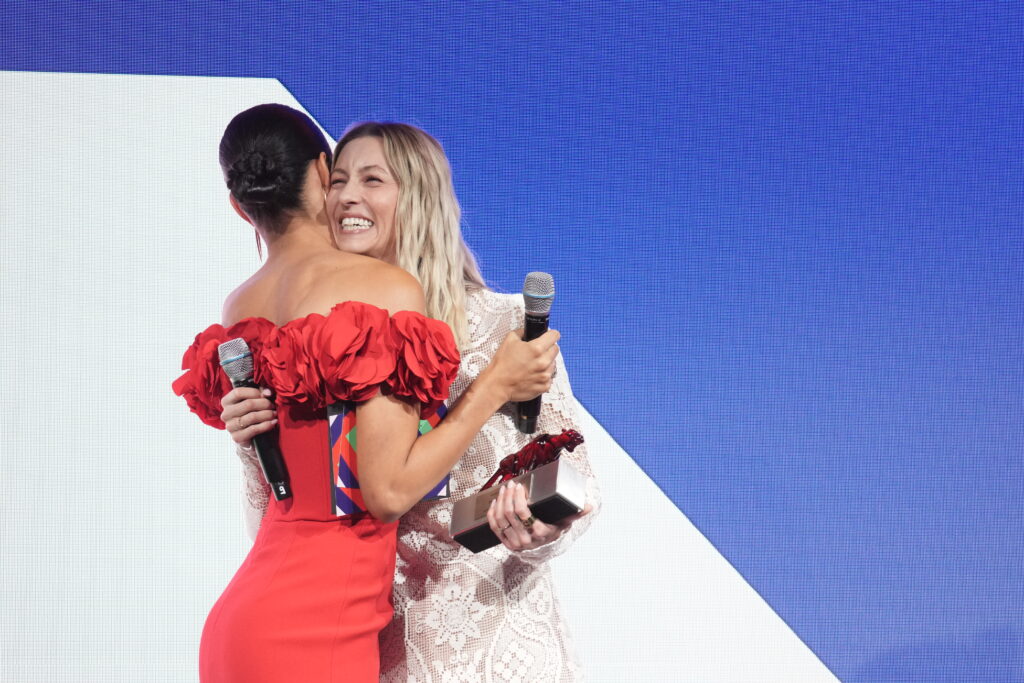
FAB: Winning the “Young Fashion Design” award is a major milestone. What are your future plans for Plaid-à-Porter, and how do you envision your brand evolving in the next five years?
Estelle Adeline: I am deeply honoured to have received the prestigious New Faces Award for Style in the category “young fashion design“ just six months after launching. This recognition confirms that I am on the right path and that people are increasingly understanding what truly matters in fashion. Being part of the famous DER BERLINER SALON during fashion week this summer was also beyond joy. I am looking forward to future adventures of this sort, and I am thankful for all the incredible support people have given me. I have a variety of outstanding collections in the pipeline, exciting collaborative projects with individuals who embody the Plaid-à-Porter spirit, and upcoming partnerships with major fashion magazines. Additionally, I am working on making Plaid-à-Porter available not only online but also in various renowned stores. Seeing Plaid-à-Porter in international stores is definitely my next goal, and I am super excited.
More Like This:
Latest Ways to Make Your Bedroom More Cosy
Elegance transcends mere style at BEVZA AW24 Runway Show, New York
FAB: What advice would you give to young, aspiring designers who want to create fashion that is both emotionally resonant and environmentally conscious?
Estelle Adeline: For me, there are two crucial points: The first is to have a perfect understanding of the current state of the fashion industry in terms of sustainability. What has already been implemented, what hasn’t, what is missing, and what works? Is my concept holistically sustainable, or is sustainability just an obstacle that needs to be addressed? Here, knowledge is power. The second point is almost the opposite: closing your eyes and listening only to your own voice. Imitation gets you nowhere. Designs must come from an entirely individual creative force; you need to feel them, love them, and appreciate them. The person behind the brand is just as important as the result. Only then does the most important thing that distinguishes fashion emerge: emotional connection and fashion that tells stories. If someone pauses for a moment when they see your design, if it stirs something within them, then you have succeeded.
Marcella Duske, Disruptive Mind by Glo Award winner, talks sustainable design
